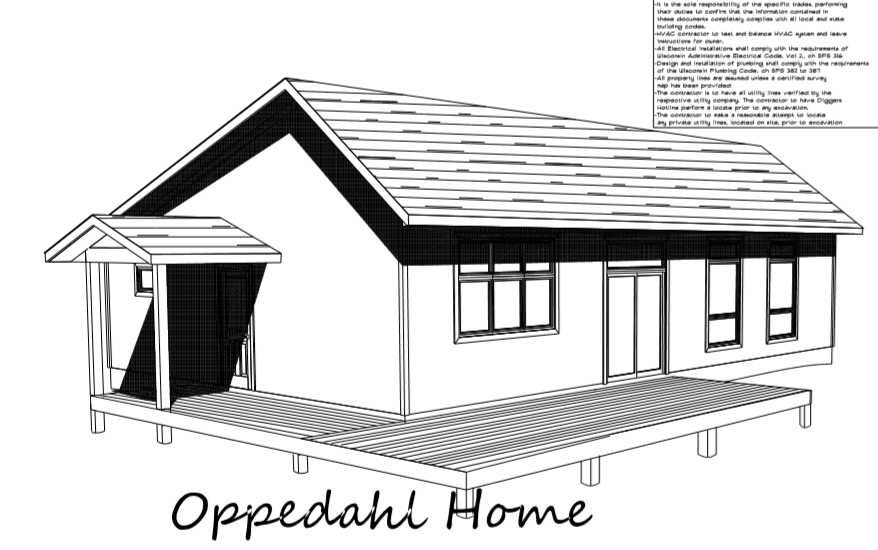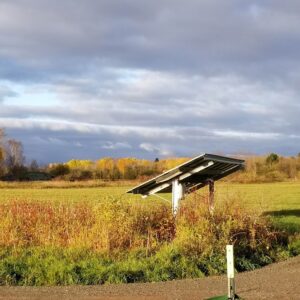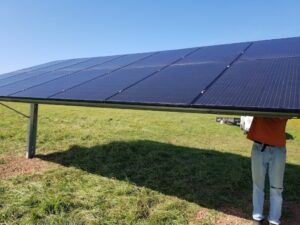In 2020 I had the chance to build a home from scratch. Nothing fancy, my dream home is a simple 2-bedroom 1,320 sq ft ranch on a slab with features that make it comfortable and healthy. Living in this house I have never paid a propane or natural gas bill, and five months of the year pay no electric bill (except the fixed fee to connect to Xcel’s grid). My average energy cost is $2/day. The daily cost ranges from $0.54/day in June to $8.34/day in January. This is possible because of a 16-panel solar array on site.
The biggest challenge is heating, since electric heat is expensive. The infloor heat is augmented by an efficient woodstove with a fresh air supply, so I can’t say there are no combustibles in my home. However, I find my home is warm, quiet, has less dust and better air quality than any other home I’ve lived in.
Building on a rural lot allowed me to roll the solar power, well, and septic system into a mortgage, so those utilities are a fixed amount over 30 years which gives me peace of mind. As I age, I take comfort in knowing the cost of my utilities is stable and not spiraling upward with global markets.
In addition to the financial aspect, I wanted to reduce my use of fossil fuels. I believe the high winds, increased flooding, and more extreme temperatures we’re experiencing are a result of climate change caused by humans putting more carbon into the atmosphere. I worry about the future for my two sons and their families as our earth becomes more stressed by climate change. I wanted to try and live in a way that would reduce my carbon footprint by using less fossil fuels like propane or natural gas in my home.
My house was built using conventional construction techniques—the most unconventional component are the solar panels wired into the electric meter. I am grateful that every day the sun rises and gives me free energy! When the sun shines, the electric meter spins backwards.
With the help of Cheq Bay Renewables I participated in the group-buy which streamlined installation and reduced the cost of solar panels by buying in bulk. The solar panels and ground mount cost $12,122 plus another (unexpected) $2,552 of electrical work for trenching, connection, and permit application preparation. A federal solar credit reduced the cost by 26% bringing the cost down to $10,858. The solar system will pay for itself in eight years.
The panels don’t produce all the energy I need, so I may add more in the future, especially if my next vehicle is electric.
You can do this too. All-electric features can be adopted in any housing situation. Readily available Energy Star electric appliances, electric water heater and boiler can be supported by a roof-top solar panel system or buying shares in a solar farm offered by utility companies.
It is impossible to get all fossil fuels and their emissions out of my life, since the materials, production and transportation of goods like solar panels, concrete, computers, vehicles and many other things require the use of fossil fuels. But I’m happy with my decision to reduce the use of fossil fuels and maximize solar power in my all-electric home.


